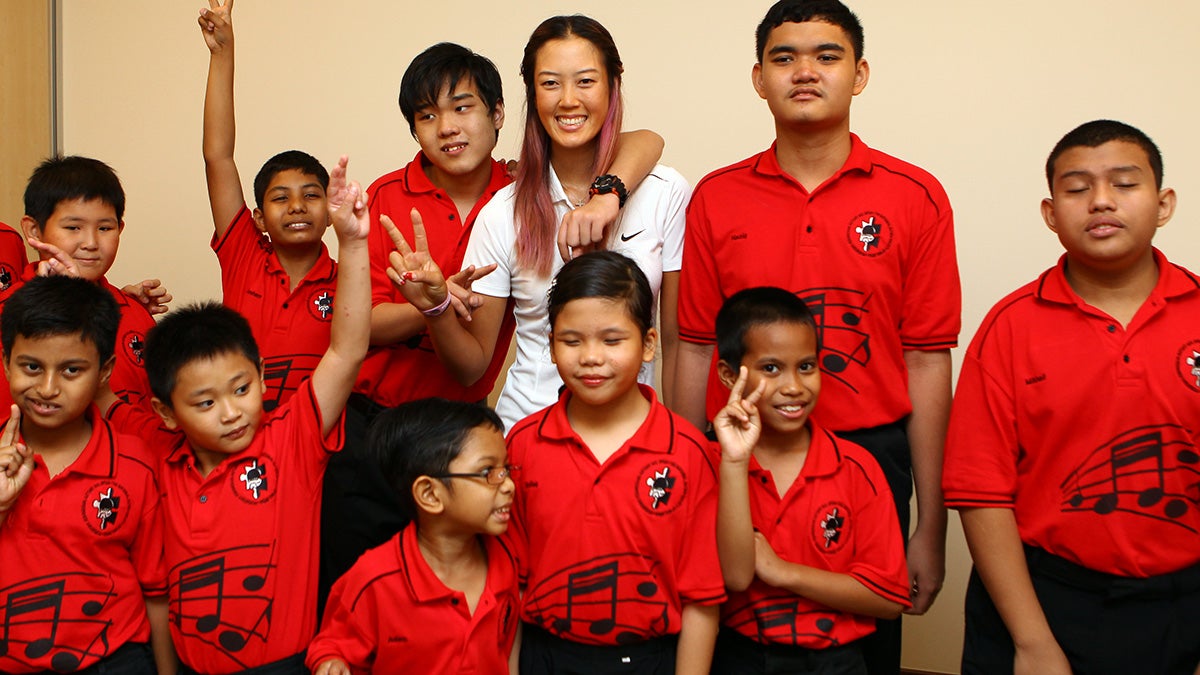Studies: Children on autistic spectrum could benefit from sports activities

For people on the autism spectrum, exercise can have a positive effect. But programs designed to accommodate their needs are not as prevalent, leading to less opportunities to engage in physical activity.
“Very few studies of the recreational patterns of children with ASD, and specifically those with HFA, have been conducted,” the authors note in Recreational Participation of Children with High Functioning Autism. Children with HFA “took part more frequently in recreational activities either alone or with families and closer to home. In contrast, peers responded more frequently that they participated in recreational activities that involved other people and were located further from their home.”
Youth with autistic spectrum disorders (ASD) may be at risk for inactivity due to social and behavioral deficits often associated with the condition, such as difficulties understanding social cues, making eye contact, playing imaginative and social games, engaging in sharing/turn-taking and reciprocal conversation, and making friends (Autism Society of America, 2002). And while the lack of specific studies of physical activity for people on the autism spectrum exists, members of this group were included in other activity level studies.
In a study published in the Review Journal of Autism and Developmental Disorders, moderate physical activity “may be especially beneficial to children with autism spectrum disorders including improved physiological, cognitive, psychological and behavioral functioning. However, few (physical activity studies)-based interventions have targeted adolescents with ASD, when PA rates are shown to decline significantly, primarily focusing instead on children with ASD.”
Additionally, a study in Research in Autism Spectrum Disorders found that physical exercise improves the motor skills of people with autism spectrum disorders as well as the social skills of those same people.
In examining physical activity patterns in youth with autism spectrum disorders, Chien-Yu Pan and Georgia C. Frey found “In addition, youth with ASD have few opportunities for extracurricular physical activity. The competitive focus of community-based programs often prohibits successful participation and these individuals are typically ineligible for segregated programs such as Paralympics or Special Olympics, because, depending on the severity of the condition, diagnostic criteria are not always met. Essentially, youth with ASD are in an indeterminate state regarding physical activity participation. There are few segregated programs that can address the special needs of those with ASD, but because of these special needs this group is likely to be excluded or unsuccessful in integrated activities. As a result, physical activity patterns in youth with ASD are probably different from peers who are afforded greater opportunities to be active.”
“Children with HFA reported participating in significantly fewer physical activities with a greater than 20 % difference in reported participation.” – Recreational Participation of Children with High Functioning Autism
“Children with HFA reported participating in significantly fewer activities with a narrower range of exposure to other people and staying closer to home, but not with less intensity compared to peers. It is encouraging that children with HFA were participating in a variety of recreational activities, albeit fewer than typically developing children. This restriction was especially true for physical activities, which may have health and fitness consequences.”
And similar to their non-ASD counterparts, many adolescents, teens and young adults on the autism spectrum “cited their interest in sedentary activities, particularly those involving technology, as the most frequent barrier to MVPA after school (DuRant et al. 1996). They cited numerous reasons that seemed to be excuses for not exercising to gain more time to engage in technology-based activities (e.g., “physical activity is boring,” “I get tired to exercise,” or “exercise interferes with my time. I could be home and play video games”).
However, if barriers to activity are removed, alleviating “the multitude of barriers that children with ASD face when attempting to participate in after-school physical activity” will increase participation.
Related articles
Alternative Baseball Organization aims to strike out autism discrimination


